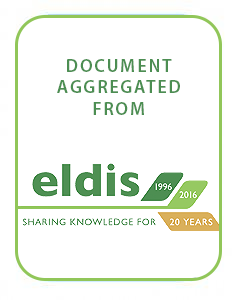Resource information
The Western Indian Ocean (WIO) region has valuable and diverse coastal and marine resources, but much of its natural capital is either threatened or declining. The WIO encompasses rich diverse tropical and subtropical areas along the coastlines of Somalia, Kenya, Tanzania, Mozambique and South Africa. This region also comprises vast oceanic areas and the island states of Madagascar, Seychelles, Comoros, Mauritius and Réunion. This paper focuses on the marine and coastal governance of mainland states in the region. As countries in the WIO region gear for a sustainable oceans economy, there is an urgent need for effective tools to ensure the resilience of coastal and marine biodiversity, to regulate sustainable resource use and to protect the livelihoods of millions of people. To achieve this, anticipatory approaches such as ecosystem-based, integrated resource management and coastal and marine spatial planning need to be used to promote sustainable Blue Economy pathways in the WIO, and facilitate the management of ecosystems and biodiversity in regional spatial planning. This essentially consists of designating and expanding effective marine protected areas (MPAs) and other priority areas for conservation, as well as including community-based models for sustainable management.This paper addresses some key governance challenges in the WIO region related to the inclusive management needed to ensure that resource management approaches, specifically in and around MPAs, produce outcomes for nature and for people. Key to their success is the ability to demonstrate and enhance socio-economic development benefits and to communicate these benefits through thorough economic valuations. Attention must focus not only on expanding protected areas’ coverage but also on enhancing the capacity of management agencies and communities to govern conservation spaces effectively and attract sustainable, long-term financing. Collaborative partnerships around the conservation and sustainable management of in-shore marine resourcescan significantly contribute to meeting the region’s national development targets, the AU’s Agenda 2063, the commitments set out in the 2030 global development agenda and the Aichi targets of the UN’s Convention on Biological Diversity.



